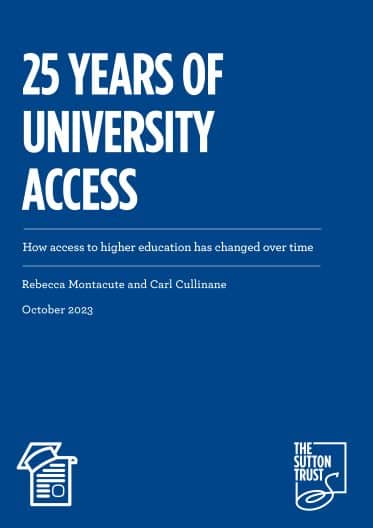A major study of higher education trends over the past 25 years reveals persistent access gaps for disadvantaged students, particularly at the most selective universities.
The research, using a unique dataset compiled by dataHE for the Sutton Trust, shows that despite huge expansion of higher education, the progress that has been made in closing access gaps between state and independent school pupils has not translated into significantly more equal representation of young people from less advantaged homes.
The report shows that while we have more young people accessing higher education than ever, an escalating education ‘arms race’ has meant that narrowing the gaps in access to the most selective universities has been stubbornly slow.
This research consists of a summary report authored by Dr Rebecca Montacute and Carl Cullinane, as well as original analysis slides produced by dataHE which are available here.
